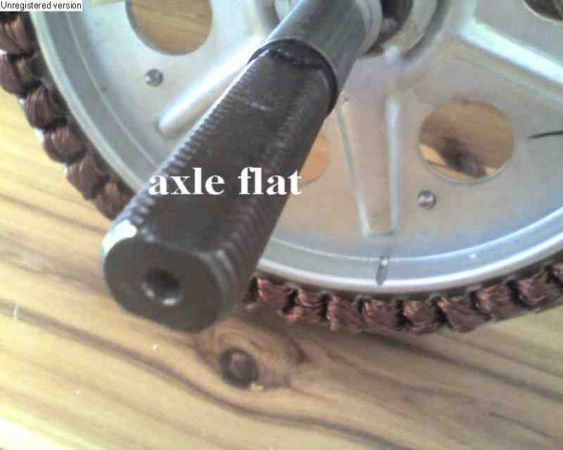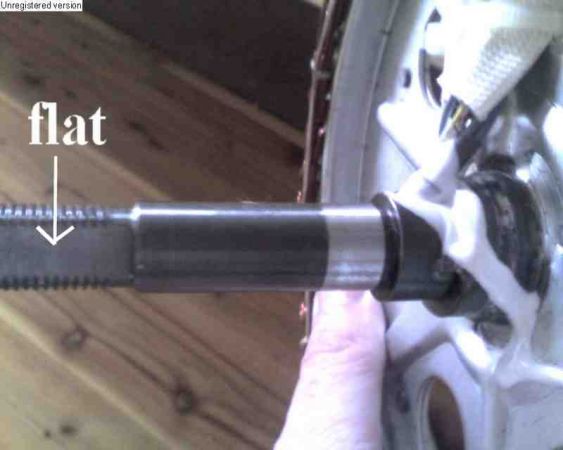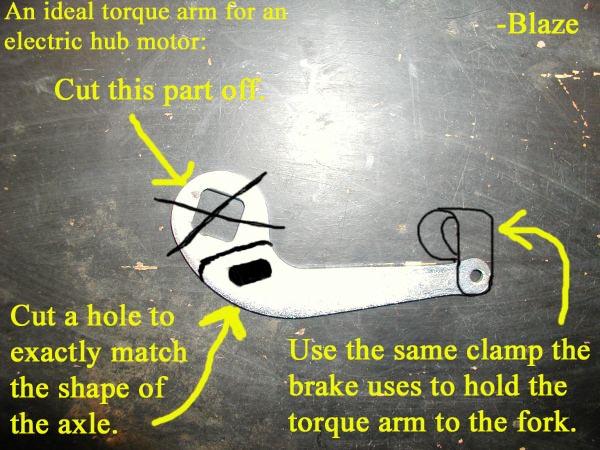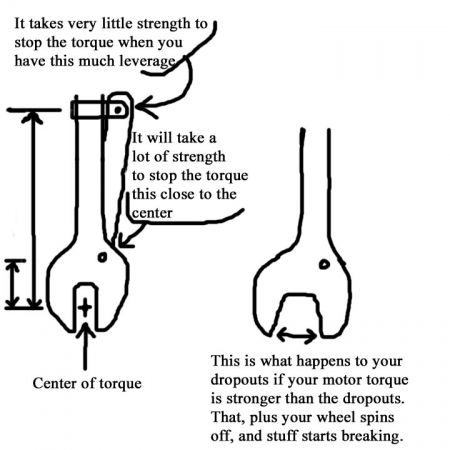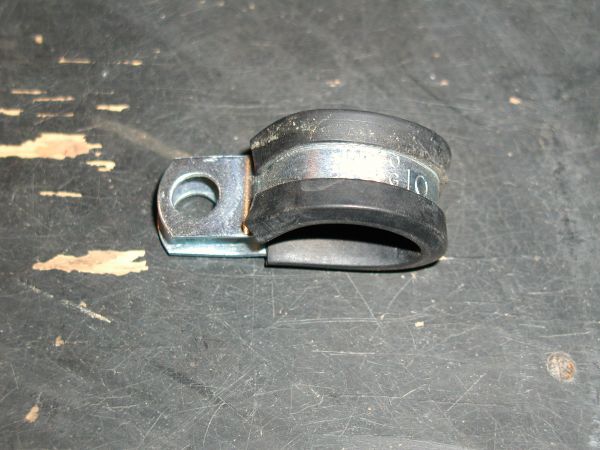B
Blaze
Guest
Yeah, that's why I use a wrench as a torque arm. It fits the flat spots on the axle and holds it very well. With many motors, the fork dropouts are enough to hold the flat spots, but my motor has hill-climbing torque, and it opened up the dropouts, which were the only things holding the axle. After looking at these photos, my drawings should make a lot more sense (this axle is for a rear hub motor, so the axle is a lot longer, but the flat spot looks the same)...
